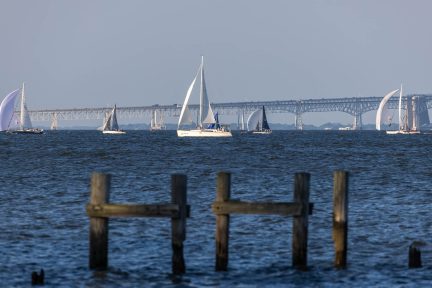$23 Million Released for Chesapeake Bay Watershed Initiative
$23 Million Released for Chesapeake Bay Watershed Initiative
Restoration of the Chesapeake Bay and its watershed will be bolstered by the release of $23 million for the Chesapeake Bay Watershed Initiative, a program of the 2008 Farm Bill that provides the region’s farmers with assistance to implement agricultural conservation practices.
The 2008 Farm Bill will provide $188 million over the next four years to support restoration of the Chesapeake Bay and its watershed, which represents one of the largest single federal investments in the clean-up effort and an unprecedented targeting of Farm Bill resources to a specific watershed. Congressionally authorized future funding levels are $43 million in 2010, $72 million in 2011 and $50 million in 2012.
Supported agricultural conservation practices such as nutrient management, cover crops, crop residue management and vegetative buffers will improve water quality, preserve and enhance natural resources, and reduce the pollutants flowing into the streams, creeks and rivers that feed the Chesapeake Bay.
Technical and financial assistance will be available to eligible landowners to address wetland, wildlife habitat, soil, water and related natural resource concerns on private agricultural land in parts of Delaware, Maryland, New York, Pennsylvania, Virginia and West Virginia. Landowners will also be assisted with planning, designing, implementing and evaluating habitat conservation and restoration.
“The Chesapeake Bay Watershed initiative is an important source of technical and financial assistance to agricultural producers who want to go the extra mile to improve and protect the Bay,” said Agriculture Secretary Ed Schafer. “This initiative will help producers control erosion and reduce sediment and nutrient levels in ground and surface water.”
Agriculture covers almost one-quarter of the watershed, representing the largest intensively managed land use. Consequently, agriculture is the leading source of nutrient and sediment pollution to the Bay, contributing an estimated 42 percent of nitrogen, 46 percent of phosphorus and 72 percent of sediment annually.
The agricultural community has made many significant contributions during the past 25 years to improve water quality and habitat. Agriculture remains a key part of the solution to Bay restoration, and the Chesapeake Bay Watershed Initiative will provide vital funding to increase necessary conservation practices.
USDA’s Natural Resources Conservation Service (NRCS) will administer the Chesapeake Bay Watershed Initiative. Many partners of the Chesapeake Bay Program, including the six Bay states and the Chesapeake Bay Commission, provided key input and information that supported the initiative’s authorization in the 2008 Farm Bill. Also through the Chesapeake Bay Program, the U.S. Environmental Protection Agency has collaborated with USDA in prioritizing and implementing nutrient reduction activities in the Chesapeake Bay Watershed through previous Farm Bill programs and will continue in this role.
“This funding will help the agricultural community turn the tide on a cleaner, healthier Bay,” said EPA Administrator Stephen L. Johnson. “Working together, the federal government and our partners can solve the challenges of the Chesapeake Bay.”
USDA leads efforts on public and private lands to help reduce the impact of nutrient and sediment pollution on wildlife habitat, forest lands and water quality, as well as supporting community involvement in managing natural resources, urban green space and land stewardship. Since its inception in 1935, NRCS continues its unique partnership approach to conservation that is based on specific, local conservation needs, while also accommodating state and national interests. For more information on NRCS, the Chesapeake Bay Watershed Initiative and other conservation programs available in local communities, visit a USDA Service Center or visit NRCS online at www.nrcs.usda.gov.



